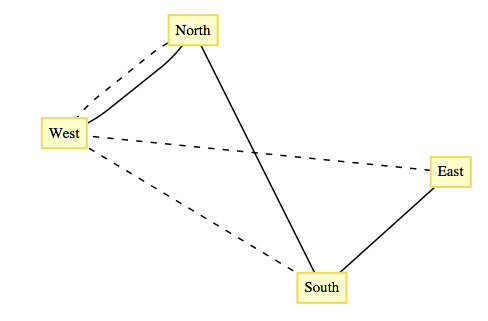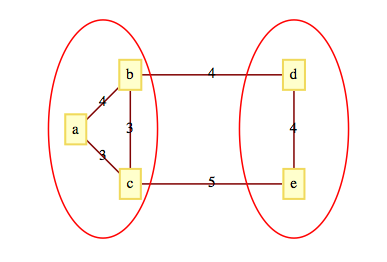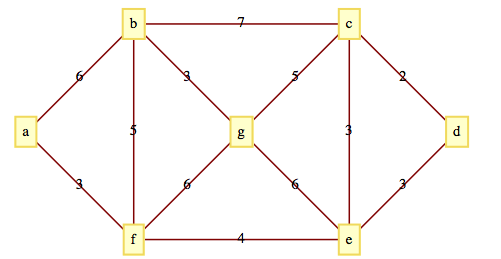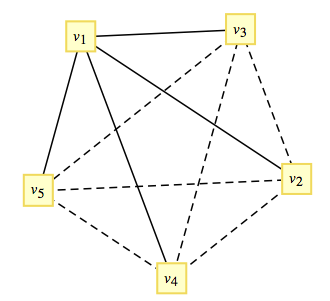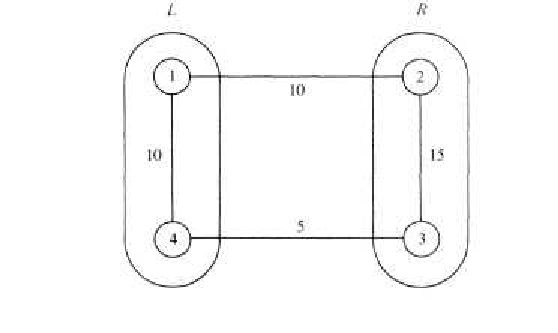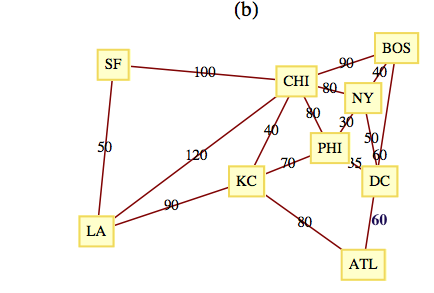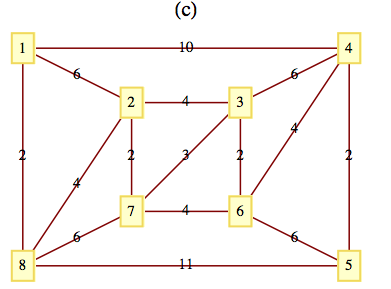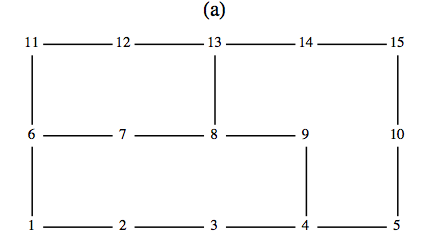Edges in one solution are: \(\{8,7\},\{8,9\},\{8,13\},\{7,6\},\{9,4\},\{13,12\},\{13,14\},\{6,11\},\{6,1\},\{1,2\},\{4,3\},\{4,5\},\{14,15\},
\textrm{ and } \{5,10\}\)
Vertices 8 and 9 are centers of the graph. Starting from vertex 8, a minimum diameter spanning tree is \(\{\{8, 3\}, \{8, 7\}, \{8, 13\},
\{8, 14\}, \{8, 9\}, \{3, 2\}, \{3, 4\}, \{7, 6\}, \{13, 12\}, \{13, 19\}, \{14, 15\}, \{9, 16\}, \{9, 10\}, \{6, 1\}, \{12, 18\}, \{16, 20\}, \{16,
17\}, \{10, 11\}, \{20, 21\}, \{11, 5\}\}.\) The diameter of the tree is 7.
